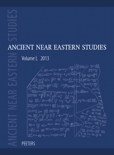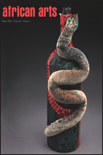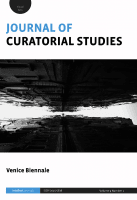
Rock Art Research
Scope & Guideline
Pioneering Research in Rock Art and Culture
Introduction
Aims and Scopes
- Interdisciplinary Research:
The journal encourages studies that integrate various disciplines such as archaeology, anthropology, and art history to explore the multifaceted nature of rock art. - Cultural Contextualization:
Papers often focus on the cultural, social, and historical contexts of rock art, examining how these artworks relate to the identities and traditions of the communities that created them. - Scientific Analysis:
There is a strong emphasis on the application of scientific methods, including dating techniques and material analysis, to enhance the understanding of rock art's age, composition, and preservation. - Global Perspectives:
The journal publishes research from diverse geographical regions, reflecting a global interest in rock art and its interpretations across different cultures. - Conservation and Preservation:
Research often addresses the challenges of preserving rock art in the face of environmental change and human impact, advocating for sustainable practices.
Trending and Emerging
- Cognitive and Psychological Approaches:
There is a growing interest in understanding how cognitive processes relate to the creation and interpretation of rock art, exploring the psychological dimensions of human interaction with these artworks. - Environmental and Ecological Contexts:
Recent studies emphasize the relationship between rock art and ecological knowledge, investigating how traditional ecological practices are represented and safeguarded through rock art. - Technological Innovations:
The use of advanced technologies such as 3D recording, photogrammetry, and image enhancement techniques is becoming increasingly prevalent, allowing for more detailed analysis and preservation of rock art. - Social Agency and Community Engagement:
Research is increasingly focusing on the role of rock art in contemporary social contexts, examining how communities engage with and interpret their cultural heritage, especially in post-colonial settings. - Transdisciplinary Approaches:
The integration of various fields such as anthropology, ethnography, and art history is being increasingly recognized, leading to more holistic studies that appreciate the complexity of rock art within societal frameworks.
Declining or Waning
- Traditional Interpretations of Motifs:
Earlier studies heavily focused on the symbolic meanings of specific motifs, but there is now a trend away from purely iconographic analyses toward more complex contextual and interdisciplinary approaches. - Regional Studies with Limited Scope:
While regional studies were once a staple, publications that focus solely on localized rock art without broader implications or comparative analyses have diminished in favor of more integrative research. - Historical Archaeology of Rock Art:
The focus on historical contexts of rock art, particularly in relation to colonial narratives, has waned as newer studies prioritize indigenous perspectives and contemporary relevance.
Similar Journals

Iconographica
Connecting Art and Culture in Scholarly ExplorationIconographica is an esteemed journal published by SISMEL EDIZIONI GALLUZZO, dedicated to the exploration of cultural narratives through visual arts and performing arts. Based in Italy, this journal has been providing a platform for scholarly discourse from 2015 to 2023, and it serves as an important resource for researchers, professionals, and students interested in these interdisciplinary fields. Although indexed in the Q4 quartile for both Cultural Studies and Visual Arts, this journal offers valuable insights that encourage the examination and understanding of visual culture. While currently operating without an open access model, its rigorous peer-review process ensures high-quality academic contributions that reflect the evolving dynamics within these areas of study. Set against the backdrop of a rapidly transforming cultural landscape, Iconographica aims to foster engagement, inspire innovative perspectives, and cultivate a deeper appreciation for the interplay between culture and visual representation.

Ancient Asia-Journal of the Society of South Asian Archaeology
Advancing Knowledge of South Asia's Archaeological TreasuresAncient Asia - Journal of the Society of South Asian Archaeology, published by ARF India, stands as a pivotal resource for the exploration and dissemination of archaeological research focused on the rich history and culture of South Asia. Since its inception as an Open Access journal in 2006, it has become an essential platform for scholars and enthusiasts alike, boasting an impressive range of quartile rankings across multiple disciplines, including Anthropology, Archaeology, History, and Visual Arts. With expansion into various indexed categories and consistent dissemination of impactful research common to this highly diverse field, Ancient Asia aims to foster interdisciplinary dialogue, facilitate collaboration among researchers, and enhance the global understanding of ancient civilizations within the region. By embracing an inclusive access model, the journal encourages wide readership and engagement, positioning itself as a key player for students, professionals, and academics interested in delving into the archaeological marvels of South Asia.

Baltic Journal of Art History
Advancing Scholarly Discourse in Visual ArtsBaltic Journal of Art History is a prominent academic journal published by UNIV TARTU PRESS, focusing on the rich tapestry of art historical research within the Baltic region and beyond. With its ISSN 1736-8812 and E-ISSN 2346-5581, the journal serves as a vital platform for scholars, artists, and historians to disseminate innovative findings and critical analyses in the fields of History and Visual Arts and Performing Arts. Established in 2017, it has gained recognition in academic circles, achieving a Q3 ranking in History and a Q2 ranking in Visual Arts and Performing Arts as of 2023. Despite not being open access, the journal continues to attract a diverse readership eager to engage with its rigorous, peer-reviewed content. Situated in Estonia, the journal not only enriches the regional scholarly discourse but also contributes significantly to global conversations on art history. Positioned at a pivotal intersection of various disciplines, the Baltic Journal of Art History invites researchers and practitioners alike to explore the aesthetic and cultural narratives that shape our understanding of art.

Ancient Near Eastern Studies
Advancing Scholarship in the Heart of Ancient HistoryAncient Near Eastern Studies, published by PEETERS in Belgium, is a distinguished journal dedicated to the exploration and scholarship of the rich cultural and historical tapestry of the ancient Near East. With a focus on interdisciplinary research, this journal invites contributions across various fields including Archeology, History, Classics, Literature and Literary Theory, and Visual Arts and Performing Arts. As evidenced by its robust performance in the 2023 category quartiles, ranking Q1 in Classics and Q2 in History, this journal is recognized for its academic rigor and relevance, making it an integral platform for researchers, professionals, and students alike. Although currently not open access, it provides indispensable insights into research trends and theoretical frameworks that advance our understanding of ancient civilizations. With its ISSN 1378-4641 and E-ISSN 1783-1326, Ancient Near Eastern Studies continues to foster scholarly communication and engagement in this vital area of human history.

GOYA
Illuminating the Intersection of Art and CultureGOYA, published by the esteemed FUNDACION LAZARO GALDIANO, is a pivotal journal in the field of Visual Arts and Performing Arts. With an ISSN of 0017-2715, this Spanish journal serves as a critical platform for scholars, artists, and practitioners to engage with contemporary issues, trends, and methodologies in the arts. Since its inception, GOYA has strived to illuminate the intersection of artistic expression and cultural discourse, with coverage spanning from 2002 to 2024. The journal proudly holds a Q3 category ranking in the 2023 Scopus assessments for its field, reflecting its respected position among peers, with a notable rank of #377 out of 667. Though it does not follow an Open Access model, GOYA continues to contribute significantly to the academic landscape, enabling a deeper understanding of artistic practices and their societal implications. Researchers and students alike will find the journal an invaluable resource for insights and inspiration within the dynamic realm of the arts.

AFRICAN ARTS
Fostering Global Discourse on African ArtsAFRICAN ARTS is a distinguished journal published by MIT PRESS, focusing on the vibrant intersections of literature, visual arts, and performing arts within the African context. Boasting an ISSN of 0001-9933 and an E-ISSN of 1937-2108, this journal serves as a critical platform for scholars and practitioners worldwide to explore and disseminate their research on African artistic expressions. With a solid impact represented by its Q3 rankings in both Literature and Literary Theory and Visual Arts and Performing Arts as of 2023, it ranks in the top 20% within the literature category and in the top 30% for visual arts. AFRICAN ARTS aims to foster a deeper understanding of the cultural, historical, and social contexts that shape these disciplines, embracing a wide array of methodologies and theoretical frameworks. Though not an open-access journal, it provides valuable insights and analysis that contribute significantly to the global discourse surrounding African arts, making it a vital resource for researchers, professionals, and students alike.

Mediterranean Archaeology & Archaeometry
Exploring the Depths of Mediterranean HeritageMediterranean Archaeology & Archaeometry is a premier academic journal dedicated to advancing the fields of archaeology, anthropology, conservation, and history, published by UK Zhende Publishing Ltd. With its ISSN 1108-9628 and E-ISSN 2241-8121, this journal serves as a vital platform for scholars and practitioners to disseminate innovative research and findings related to the rich archaeological heritage of the Mediterranean region. It has gained remarkable recognition, achieving a Q2 ranking in anthropology and archaeology, and a Q1 classification in several categories including arts and humanities, conservation, and history as of 2023. Its impressive Scopus rankings underscore its impact, with a significant position in history (59/1760) and conservation (11/103) disciplines. Spanning years from 2008 to 2022, the journal invites open access contributions to foster collaboration and interdisciplinary dialogue among researchers, students, and professionals alike, making it an indispensable resource for those engaged in the exploration and preservation of historical narratives within the Mediterranean context.

REVUE DES MUSEES DE FRANCE-REVUE DU LOUVRE
Cultivating Critical Perspectives on Cultural HeritageREVUE DES MUSEES DE FRANCE-REVUE DU LOUVRE, published by CONSEIL MUSEES NATIONAUX, serves as a vital resource in the fields of Conservation, Museology, and the Visual Arts. With its ISSN 1962-4271 and a dedicated focus on the interplay between historical artifacts and contemporary museum practices, the journal has established itself within the academic community despite its Q4 ranking in various categories as of 2023. The journal is particularly aimed at researchers, professionals, and students who are engaged in the study of museum practices and the preservation of cultural heritage, providing insights and discussions that are both scholarly and practical. Though the journal does not have open access options, it remains a pivotal outlet for innovative ideas and critical perspectives from the vibrant French museum landscape. The issues published since its convergence years from 2009 to 2016 and from 2018 to 2024 continue to foster rich dialogues around the evolving role of museums in society, making it an essential read for anyone invested in the future of cultural institutions.

Journal of Mosaic Research
Exploring the vibrant intersection of culture and creativity.Journal of Mosaic Research, published by ULUDAG UNIVERSITY, MOSAIC RESEARCH CENTER, is a distinguished open-access journal dedicated to the fields of archaeology, visual arts, and performing arts. Since its establishment in 2019, the journal has been committed to advancing scholarly discourse through innovative research and critical analysis, and it transitioned to an open-access model in 2021 to enhance accessibility and dissemination of knowledge. With an ISSN of 1309-047X, this journal has been recognized for its quality, evidenced by its 2023 rankings which place it in the Q3 quartile for both archaeology and visual arts and performing arts within the Scopus database. Operating from Bursa, Turkey, the journal provides a platform for researchers, professionals, and students to publish their findings, share insights, and engage with contemporary topics in these vital fields of study. As it continues to grow, the Journal of Mosaic Research aims to foster interdisciplinary collaborations and inspire future generations of scholars.

Journal of Curatorial Studies
Connecting Scholars and Practitioners in the ArtsThe Journal of Curatorial Studies, published by INTELLECT LTD, is a leading scholarly journal dedicated to advancing the field of curatorial practice across the visual arts, museology, and conservation. With an ISSN of 2045-5836 and an E-ISSN of 2045-5844, this UK-based publication has been a vital resource since its establishment in 2016, covering significant developments and innovative research until 2023. As an academic platform, it seeks to foster interdisciplinary dialogue among curators, artists, and scholars, exploring contemporary challenges and methodologies within its scope. Ranking in the Q4 category for Conservation and Q3 for both Museology and Visual Arts and Performing Arts, the journal plays an essential role in elevating discourse and practice within these fields. Researchers and practitioners alike will find valuable insights that reflect the dynamic nature of curatorial studies and its profound influence on cultural heritage and contemporary art. Despite its recent establishment, it holds a commendable position in the Scopus Rankings, aiming to provide a rich repository of knowledge and practical guidance in its quest to innovate curatorial practices.